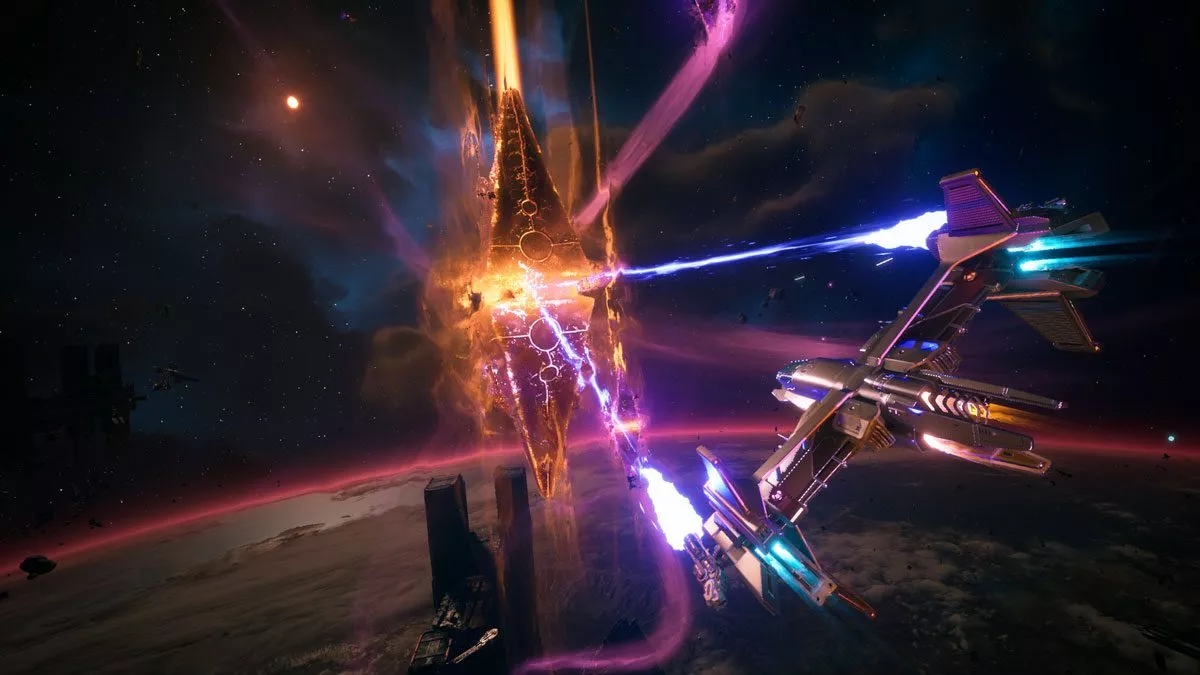All style, no substance.
Avatar exists through the sheer force of James Cameron’s will. I remember the original film as a vehicle for 3D cinema above anything else, including story. My husband and I streamed The Way of Water over two nights over some obligation to watch it, but fully aware that we weren’t going to cover a three-hour film in one sitting. We finished it merely because we started it, not because we wanted to.
Avatar Frontiers of Pandora, oddly enough, is for fans of Avatar. Enjoyment of its video game form is explicitly tied to your love of the film form, and therein lies the problem. Avatar is mindless, spectacle-filled fodder. Does it truly have fans, or simply those who dabble?
It could also be argued that Frontiers of Pandora is for fans of Ubisoft’s Far Cry franchise, because — and let’s be honest here — this is Far Cry with an Avatar skin. I mean this quite literally; if Sigourney Weaver was playing the concept of Far Cry in a film, she could hop into whatever James Cameron called his version of the Animus and wake up as Avatar mere seconds later. The lingering issue here is that I am very much burnt out by Far Cry at this point.
Am I talking about the mainline series or its spin-offs, or Blood Dragon, or prehistoric versions like Primal? Yes.
Revisiting Luke’s Far Cry 6 review, I’m not alone.
There’s nothing inherently wrong with Frontiers of Pandora, but conversely, there’s nothing amazing or even attention grabbing. Mirroring The Way of Water, which itself mirrors Avatar, you play as a member of the Na’vi as they work to free themselves from oppressive humans. The slight difference here is that your Na’vi is a true being, not an avatar, though they’re essentially a hybrid as they’ve spent their formative years in the care of humans. You eventually realise that the humans suck — or most of them, at least — and work to right wrongs.
Frontiers of Pandora is very much an Ubisoft title, offering up a map covered in chances for exploration and the opportunity to tick a box that’s part of a larger checklist. I opted to play using the guided experience, clearly showing where a quest was taking place, though there’s also the option to work from hints as in the likes of Assassin’s Creed.
Here’s why I wanted direct signposts: Avatar in any form is based on flashy technology and a very simple message, and this is a pretty filmsy setup with which to base an hours-long production. I struggled to invest in characters or plot points because I’d either felt like I’d seen it before or, worse, I simply didn’t connect with it. As such, I never really felt the need to explore outside of the main quests I was presented with.
Pandora is lush, detailed and vibrant, but that’s true for every single piece of it. After being immersed in the same environment for hours, it certainly loses its sheen. This sense of repetition can make gameplay frustrating; every plant is near-identical and I struggled to figure out if I was about to harvest health- or energy-providing resources.
My protip? Health is largely from plants that are near water… and copy-paste human outposts are nowhere near water. You can also regen health by having a reserve of energy, but I was often energy-starved and got sick of having to stop and eat something every time that happened.
In theory, your Na’vi senses should help to find resources, but I almost exclusively used them to spot quest markers. The exception to this was when I was forced to, tracking down scent lines whilst hunting to progress a mission. There’s a Far Cry-inspired crafting and upgrade system, but I largely ignored that and got by with items awarded through the main questline itself.
This strategy worked for the most part, though Frontiers of Pandora suffers from some difficulty spikes. Most of these instances feel a little broken — enemies suddenly gain superhuman speed to zip around or dodge carefully aimed arrows, or gain enhanced eyesight to spot you from distances that are frankly obscene. Worse than all that, though, are pacing issues and large exposition dumps that break the rhythm of your gameplay.
I know Starfield took a lot of flak for its reliance on fast travel, but I would have appreciated the opportunity to do it more often here rather than just running through the same ol’ rainforest getting from point A to B. There’s — thankfully — a flying mount that eases that pain point, but you won’t gain access to it until you’re 40% through the main questline. The map is huge and even flying from point to point gets dull.
As I stated in my preview, the quest that has you bond with your Ikran feels the most like you’re playing an Avatar simulator than anything else, a feat that pairs sublime visuals with a perfectly selected soundtrack. Though as I also stated in my preview, flying is lifeless and slow, especially after the truly liberating feeling earned when taking to the skies of New York in Spider-Man 2.
Apart from the niggling issues detailed above, Frontiers of Pandora is a highly polished affair, though it had my primary rig’s fans going at a constant churn. Framerates stayed fairly stable, though consistently crashed when jumping from a tall cliff into water. It also scaled down remarkably well when I needed to bounce back and forth between my GeForce RTX 2070 Super and my HP ZBook G9 laptop, and Ubisoft Connect cloud saves worked like a charm.
Ubisoft provided us with Xbox Series access a couple hours before review embargo, and while we haven’t had time to properly assess its performance — or co-op functionality, for that matter — it also feels stable (and certainly less noisy when it comes to fans). I did notice a couple texture pop-in over on Xbox Series S, but it was nothing serious.
On that note, I feel I must point out that I made the silly mistake of first installing my PC copy to my rig’s HDD instead of SSD and I ran into several game-breaking issues that revolved around enemies and quest items that weren’t popping in. The issues that I experienced mirrored those I encountered in my preview the other month, though I’m not able to confirm if that’s why I was having the issues I did back then. Regardless, let this be a lesson: the SSD is a requirement for a reason, so stick to it.
We’ve long since dropped our little assessment of good and bad things about a title to go alongside the all-important number attached to the end of a review, but re-reading Luke’s thoughts on Far Cry 6, I’d say that Ubisoft hasn’t learned enough from what it’s done before. There’s a lot of repetition, a lot of mindless things to do, and a boring story that attempts to weave it all together.
This one’s for diehard fans of Avatar or Far Cry, and even then might be a tough sell. Like the Avatar films, this is textbook average entertainment; it won’t disappoint, but it certainly won’t excite. If you’ve got a pile of shame like I do, there’s certainly better ways to spend your time.
Avatar Frontiers of Pandora will soon be available on Windows PC, Xbox Series S, Xbox Series X and PS5.
Avatar Frontiers of Pandora was reviewed using a promotional code on Windows PC via Ubisoft Connect (primary) and Xbox Series (secondary), as provided by the publisher. Click here to learn more about Stevivor’s scoring scale.
Avatar Frontiers of Pandora7 December 2023PC PS5 Xbox Series S & X |
This article may contain affiliate links, meaning we could earn a small commission if you click-through and make a purchase. Stevivor is an independent outlet and our journalism is in no way influenced by any advertiser or commercial initiative.























